‘Bob named this the Jungle,’ announces Matt Hall, facilities supervisor of the Robert Rauschenberg Residency on Captiva Island, pausing at the edge of a shady track shrouded by tropical plants. ‘This road meanders through here because when he bought this portion [of land] he had two Volkswagens called This and That. He drove This through the Jungle and wherever it made it through the trees it became the road.’ The track winds past sea grape trees, strangler figs and bougainvillea to the Beach House, a white-painted property looking out on to the Gulf of Mexico, that from 1970 became Robert Rauschenberg’s home. It is now one of several buildings scattered across a 20-acre estate, which the artist bought up over four decades before his death in 2008; since 2012, the entire complex has been given over to a residency programme managed by the Rauschenberg Foundation.
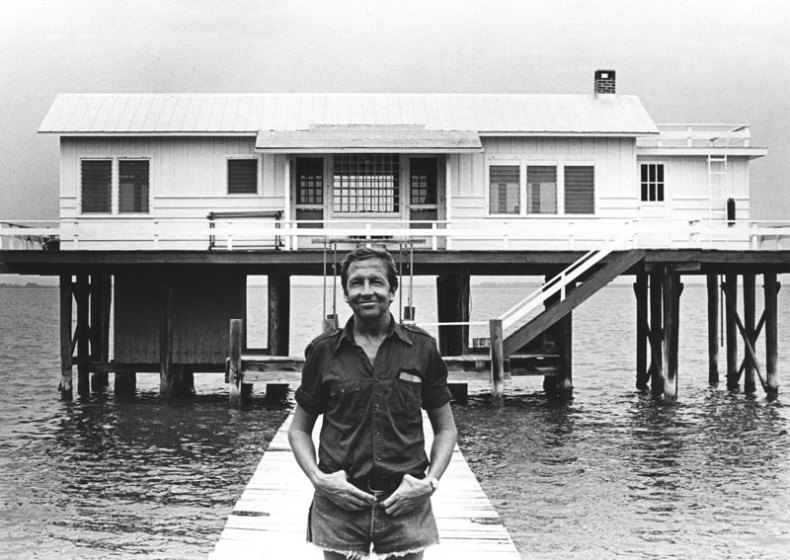
Robert Rauschenberg (1925–2008) in front of the Fish House, Captiva, Florida, 1979. Photo: Terry Van Brunt; courtesy Robert Rauschenberg Foundation
I try to imagine the artist at work on this peculiar act of tropical landscaping, and am suddenly put in mind of his collaboration years earlier with John Cage: the composer drove a Model A Ford slowly over a scroll of paper while Rauschenberg inked the wheel. The resulting Automobile Tire Print (1953) made a lasting impression on New York’s avant-garde and was an early indication of Rauschenberg’s extraordinary inventiveness. Decades later, he was leaving his mark again, more privately and rather more incongruously, on this quiet island off the Florida coast.
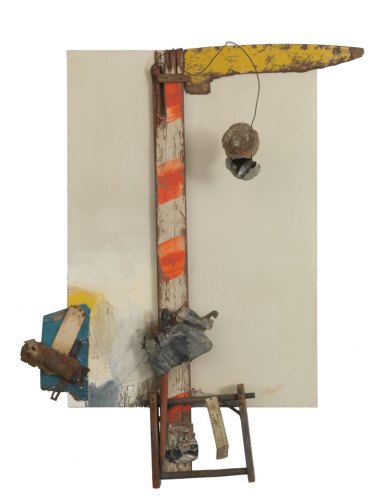
Aen Floga (1961), Robert Rauschenberg, Combine constructed of oil on canvas with wood, metal and wire. Robert Rauschenberg Foundation. © Robert Rauschenberg Foundation
Robert Rauschenberg moved permanently to Captiva at the age of 45, by which point he was one of the brightest stars of American art. Throughout the 1950s and ’60s he had steadily eroded the barriers between art and life, refusing to dismiss anything as a possible subject or medium for his work. In his student days at Black Mountain College he created plain white paintings that acted as grounds for passing shadows, and black paintings that incorporated newsprint and detritus from the ground itself. Later, he shocked everyone with his Combines, which took modernist collage to new extremes, chucking paint and canvas together with photos, papers and three-dimensional objects (pillows and quilts, ladders, chairs, working radios, even a stuffed goat) in energetic and bewildering artistic collisions. He collaborated with John Cage and Merce Cunningham on free-spirited theatrical spectacles (Rauschenberg never called them Happenings, but the performances certainly inspired that emerging phenomenon). He made use of commercial silkscreens as early as Andy Warhol did, and in the late 1960s he co-founded Experiments in Art and Technology (E.A.T.) with Billy Klüver and others, to test how artists and engineers might work together in a relentlessly inventive age. His innovations won him retrospectives at New York’s Jewish Museum (1962) and London’s Whitechapel Gallery (1963), as well as the Grand Prize for Painting at the Venice Biennale in 1964 – a controversial decision that, to many, signalled the moment at which New York officially usurped Paris as the global capital of art.
Rauschenberg’s decision to leave New York, where the Texas-born artist had lived and worked for 20 years, was not entirely out of the blue. In the late 1960s the city was witnessing an explosion of new art movements, fuelled by an overheated art market, and many of the more established artists were getting out. In 1960, Rauschenberg had retreated to Florida’s Treasure Island to complete a set of illustrations of Dante’s Inferno, an experience he later described as being to ‘my mature creative benefit’. But to many at the time it must have seemed an incongruous move for someone so strongly associated with the city. In 1965, when he mentioned the idea casually – and not yet entirely seriously – to art historian Dorothy Seckler, she commented: ‘I think that would be the cream of the jest for the art world: that the man who was…responsible for introducing the whole urban environment into painting…becomes a collaborator with the sun and wind and rain and flowers.’ ‘And beaches,’ Rauschenberg added. ‘I might move out there and find that all the work is finished. At that point I might just become a collector of vegetables…and I could be a critic on waves.’
Of course, Captiva was never meant to be the reclusive hideaway he had so whimsically described. Rauschenberg embraced island life – he fished, swam, cooked, and was deeply invested in the protection of the local environment. But if anything, his life there was more outward-looking and more connected than ever. He kept his New York studio at 381 Lafayette Street (it now serves as the Rauschenberg Foundation headquarters), continued his work with print specialists Gemini G.E.L. in Los Angeles, and maintained a wide-ranging international exhibition schedule. In 1984 he set up the Rauschenberg Overseas Culture Interchange (ROCI), which took him to far-flung and often troubled countries, on a programme designed to encourage social dialogue through creative activity. Artists of Rauschenberg’s stature acquire a gravity of their own, so back in Florida he welcomed a stream of visitors and collaborators and hosted a growing team of fabricators and assistants. Soon after he arrived, he acquired a lithographic printing press and invited artists including Cy Twombly, Brice Marden and Susan Weil to come and experiment. As he acquired more of the adjacent historic properties to save them from development (including a 1920s plantation workers’ hut, and Ding Darling’s Fish House, raised on a jetty overlooking Pine Island Sound), his studio practice and the community that gathered around it would only increase. In 1993, he moved into a large, custom-built studio that reflected his ever-expanding artistic ambitions.
‘As I see it, he didn’t want to be confined,’ explains Achim Borchardt-Hume, Tate Modern’s director of exhibitions. ‘You don’t have to be confined by one medium or one style, but you also don’t have to be confined [to] a studio in New York – there are other ways, other channels of distribution.’ Rauschenberg clearly saw the truth and benefit of this – in an undated letter to Philip Bishop, the art critic for the Orlando Sentinel, he claimed that ‘Captiva is the foundation of my life and my work’. And yet in one sense he never did quite escape the city limits: to this day, people tend to assess his legacy largely on his New York output, and particularly on his Combines. This is something that Borchardt-Hume and MoMA’s Leah Dickerman hope to correct with a major Rauschenberg retrospective, which opens this month at Tate Modern (1 December–2 April 2017) and travels to New York and San Francisco next year. ‘We are in a better position now to understand his whole trajectory,’ explains Borchardt-Hume. Expanding the picture provides a chance to celebrate the many new breakthroughs, but also the telling continuities, that shaped Rauschenberg’s long career.
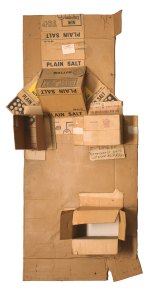
Plain Salt (Cardboard) (1971), Robert Rauschenberg. Museum of Fine Arts, Boston © Robert Rauschenberg Foundation
Rauschenberg made a point of working with whichever materials he found to hand, so something of Captiva was always going to show up – quite literally – in his work. Soon after moving he created his Cardboards, a series of delicate, unassuming constructions, pieced together out of discarded packaging and staples, and otherwise unadorned. Gone are the bold, spirited skeins of paint that hold Rauschenberg’s Combines together in such cohesive confusion; gone too are the ingenious mechanisms that animate his work from the late 1960s. He exhibited the Cardboards in 1971 at Leo Castelli’s New York gallery, to acclaim and some surprise. Were these the creations of a man grown tired of urban clamour and retreating to the more delicate detritus of the beach? Or a deliberate answer to the minimalist sculptures proliferating in New York’s galleries at the time? More conflations and contradictions are evident in his Early Egyptians, made a couple of years later. Constructed primarily of cardboard boxes and sand, Rauschenberg claimed they ‘came about as the result of fantasies and an honest insistency of working on the beach’. The impact of his new environment couldn’t be clearer in his choice of materials – but his title casts the works imaginatively back overseas to the North African desert. Captiva shaped these works, but could not confine them. After all, there are few things more ubiquitous than cardboard and sand.
As a young artist in the 1950s, Rauschenberg had to negotiate with the owner of a thrift store before he could buy the stuffed goat that stands at the heart of Monogram, arguably his most famous work. (The owner wanted $35 for it, but Rauschenberg had only $15 on him and promised to pay the rest later.) In the 1990s, he could afford to buy a hundred bicycles when he really wanted just two. The owner would only sell them as a job lot, explains Matt Hall; the rest were simply put away in the Bay House, one of Rauschenberg’s largest properties. It’s an amusing anecdote that underlines the sense of freedom, space and possibility that Rauschenberg enjoyed on Captiva, built on the hard-won artistic and financial successes of his New York years. In Florida, the artist could surround himself with the apparatus and expertise that he needed to work. This ever-expanding studio practice afforded him unprecedented freedom to experiment.
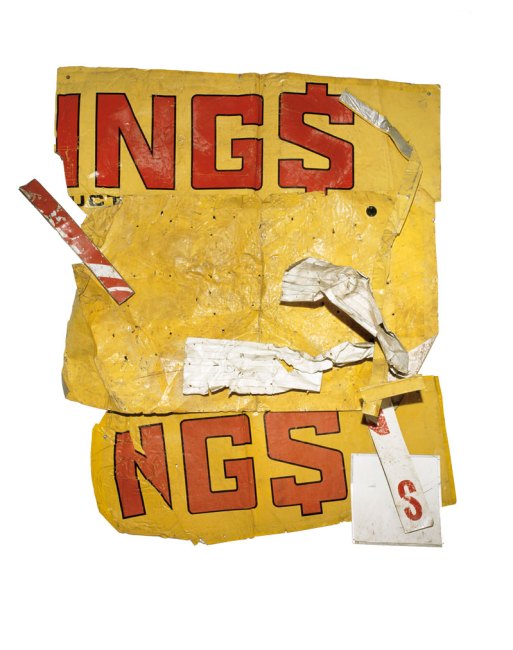
Yellow Moby Glut (1986), Robert Rauschenberg. Private collection. © Robert Rauschenberg Foundation
Typically, Rauschenberg would work in series, testing materials both in terms of their physical properties, and their visual or imaginative associations. Some he treated relatively simply, such as his Gluts of the late 1980s and ’90s – colourful assemblages of scrap metal from a junkyard outside Fort Myers. Rauschenberg intended them partly as a comment on waste and excess, and emphasised their physicality. ‘It’s a time of glut. Greed is rampant,’ he explained. ‘I’m just exposing it…I simply want to present people with their ruins.’ Other works reveal a more complex approach, in which materials are combined and overlaid with mass-media imagery or his own photographs. (For Rauschenberg, pictures were yet another readily available resource, that allowed him to cast cultural and personal reflections on to physical things – as we all do, subconsciously, in everyday life.)
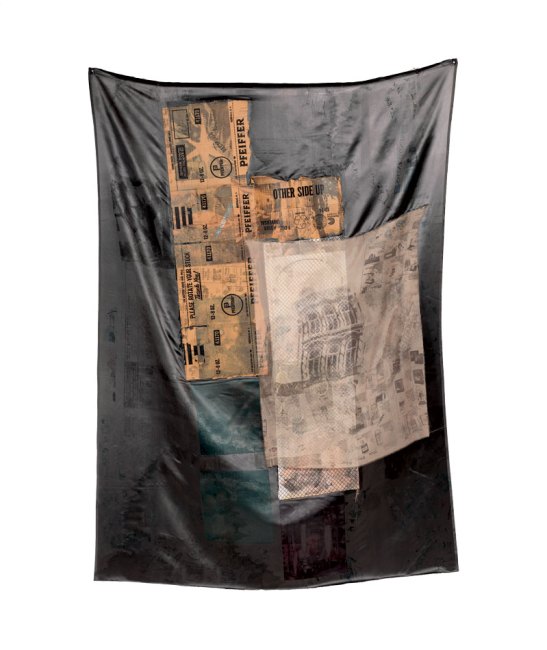
Untitled (Hoarfrost) (1975), Robert Rauschenberg, solvent transfer on fabric and cardboard. Private collection. © Robert Rauschenberg Foundation
Extensive projects would often emerge from seemingly casual events. ‘I think they were cleaning some [lithographic] stones in the print shop, and there was some residue on the fabric,’ says David White, Rauschenberg’s friend and the foundation’s curator, of the artist’s delicate Hoarfrosts from the 1970s. The artist’s observation prompted a studio investigation into the transfer of images onto silk, chiffon, taffeta and satin. Some of the Hoarfrosts include nebulous imagery that matches the fabric itself, while others are sharply printed; some are tacked loosely to the wall to catch the breeze, while others sag under the weight of various accoutrements such as rope and card. ‘He was very alert to what was visually and physically around him, and he would realise all these things can be used,’ explains White. For Rauschenberg, how to use them was a problem he never intended to solve.
In 1993, when he moved from the Beach House into a large new studio that he described as ‘a cross between the Pentagon and the Taj Mahal’, the artist began to seriously explore the potential of digital colour prints, using an Iris printer to develop several large-scale series using photographic transfer techniques. Among the best known are his Anagrams (1995–97), in which images of art and architecture rub up alongside cars, bicycles, storefronts and other scenes of modern American life. Rauschenberg used water to transfer his inkjet-printed designs, and exploited the burnishing process, which allowed him to incorporate gestural marks to knit the disparate images together on a single plane. Not content with printing on paper, he later experimented with polylaminate panels to create his Anagrams (A Pun) series, made between 1997 and 2002. The harder surface allowed for deeper, richer colours. In one, the dye from a car’s dark windscreen seems to pool and spill over onto the frame of a painting that appears in front of the bonnet: the simple mark manages simultaneously to link the two images and prevent them from being read as a literal collision. To Borchardt-Hume, Rauschenberg’s embrace of the digital age, which surprised many, was in fact entirely consistent. ‘Why would he not use digital technology? You can now print far more, you can store greater volumes of visual information,’ he explains. Rauschenberg had been quick to recognise the potential of screenprinting decades earlier: now, in his seventies, he welcomed the next wave of mass-produced imagery into his work.
The question of how to use the Captiva studios after Rauschenberg’s death was a difficult one for those left in charge, particularly as the artist left no specific instructions about it. The Rauschenberg Foundation’s decision to launch an artists’ residency programme there, rather than preserving the estate as a museum or archive, represents an attempt to safeguard the artist’s spirit. ‘I don’t think he really thought about [what would happen here],’ says residency director Ann Brady. ‘Apparently he once asked Susan Weil [his former wife and long-term friend and collaborator] what happened after you died, and she replied that you go to your studio.’ Since 2012, dozens of artists and writers have been invited to stay on the island and make use of the facilities that Rauschenberg so enjoyed – the darkroom, lithography and screenprinting presses, and the digital printers, which are certainly being used in the spirit the artist intended. (As studio supervisor Carrell Courtright puts it: ‘We get people who want to print on fabrics, who want to print on metal, and it’s our job to facilitate that. We take great pleasure in calling up Epson and stumping them.’) The artist’s old studio now functions as a dance space, and there are plans for a stand-alone sound studio and metalworking areas, as well as ongoing environmental projects. It’s a flexible and expansive programme that one imagines Rauschenberg would have enjoyed. Scattered along his Jungle road are a number of ‘offerings’ left by departing residents, from a large metal sculpture, to heavy glass ‘witches’ bottles’ and a bizarre and strange transitory figure made of bark, leaves and the shell of a horseshoe crab. Almost a decade after his death, Rauschenberg’s imprint of the island is as strong as ever. ‘Collaboration, room for experiment, joy in making and creativity…they are propositions that are fundamental to Rauschenberg’s work,’ muses Borchardt-Hume. As they are, now, to his legacy.
![Early Bloomer [Anagram (A Pun)] (1998), Robert Rauschenberg, inkjet pigment transfer on polylaminate. The White House, Washington, D.C. © Robert Rauschenberg Foundation](http://www.apollo-magazine.com/wp-content/uploads/2016/11/98.064.jpg?resize=790%2C991)
Early Bloomer [Anagram (A Pun)] (1998), Robert Rauschenberg, inkjet pigment transfer on polylaminate. The White House, Washington, D.C. © Robert Rauschenberg Foundation
From the December issue of Apollo. Preview and subscribe here.
Unlimited access from just $16 every 3 months
Subscribe to get unlimited and exclusive access to the top art stories, interviews and exhibition reviews.

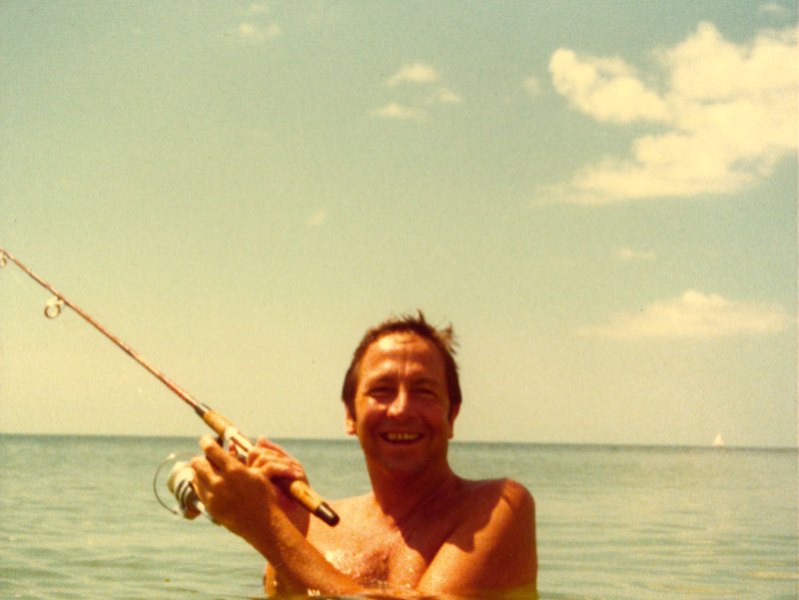
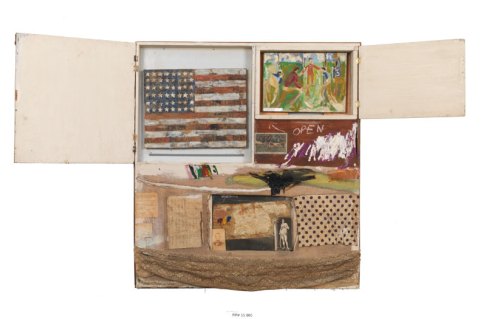
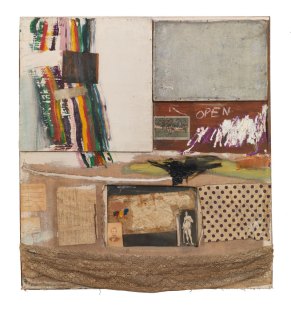
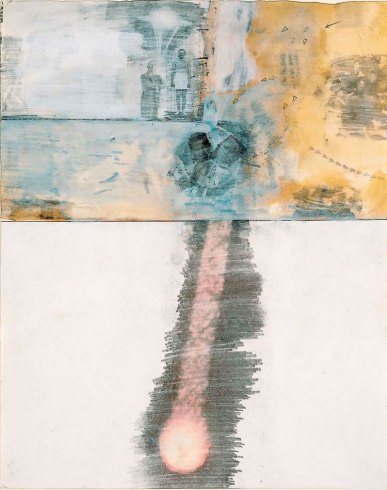
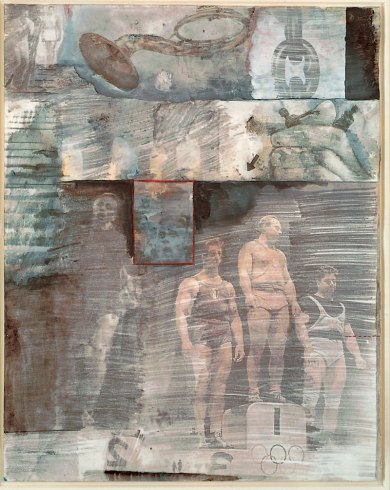
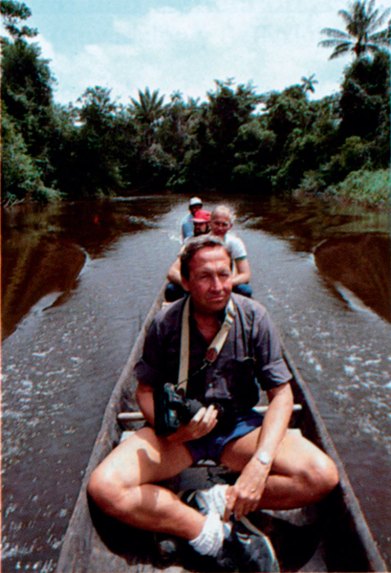
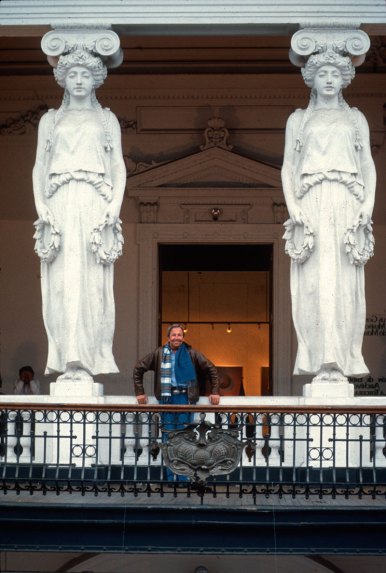
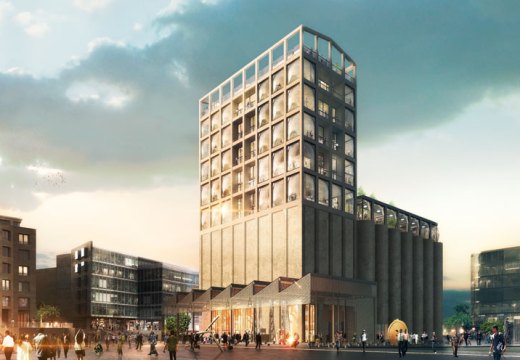

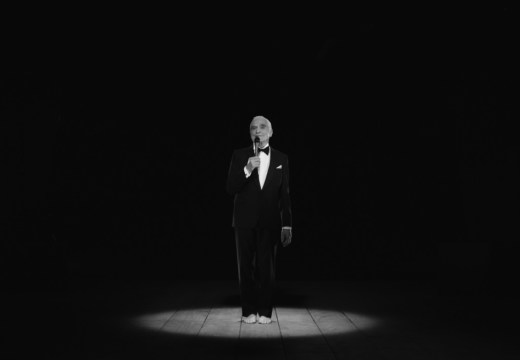









![Masterpiece [Re]discovery 2022. Photo: Ben Fisher Photography, courtesy of Masterpiece London](http://www.apollo-magazine.com/wp-content/uploads/2022/07/MPL2022_4263.jpg)
It’s time for the government of London to return to its rightful home